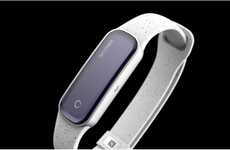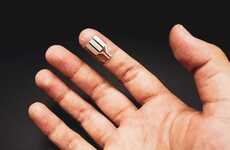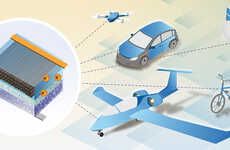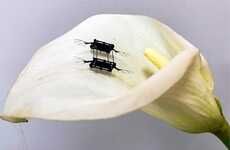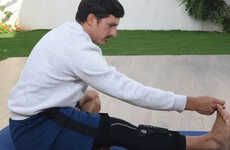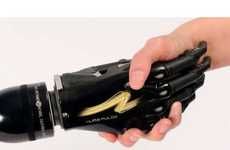
Self-Healing Artificial Muscle Charges an iPhone
References: dsc.discovery & engadget
What's better than successfully creating an artificial muscle that heals itself? Having that muscle charge your iPhone or other gadgets!
Combining breakthroughs in self-healing materials and artificial arms, University of California, Los Angeles researchers created such muscles that can generate electricity. The research could be used to make walking robots and develop better prosthetics that juice your iPod. Part of the technology is already being used in Japan to charge batteries using ocean waves.
The researchers used flexible carbon nanotubes as electrodes instead of metal-based films that fail after repeated use. If an area of the carbon nanotube fails, the region around it seals itself by becoming non-conductive preventing the fault from spreading to other areas.
Combining breakthroughs in self-healing materials and artificial arms, University of California, Los Angeles researchers created such muscles that can generate electricity. The research could be used to make walking robots and develop better prosthetics that juice your iPod. Part of the technology is already being used in Japan to charge batteries using ocean waves.
The researchers used flexible carbon nanotubes as electrodes instead of metal-based films that fail after repeated use. If an area of the carbon nanotube fails, the region around it seals itself by becoming non-conductive preventing the fault from spreading to other areas.
Trend Themes
1. Self-healing Materials - The development of self-healing artificial muscles presents opportunities for disruptive innovation in industries such as aerospace and automotive manufacturing, where self-healing materials could enhance product durability and safety.
2. Energy-generating Artificial Muscles - The technology used to create artificial muscles that generate electricity has potential application in medical devices, wearables, and fitness equipment, where energy efficiency and sustainability are increasingly important.
3. Innovative Prosthetic Devices - The breakthroughs in artificial muscle technology could lead to the development of more advanced prosthetic devices that not only improve mobility but also generate energy, providing greater independence to those with disabilities.
Industry Implications
1. Robotics - The development of energy-generating artificial muscles presents new opportunities for automation and the creation of advanced walking robots for uses in industries such as manufacturing and healthcare.
2. Renewable Energy - The use of flexible carbon nanotubes as electrodes opens up new possibilities for harnessing renewable energy sources such as ocean waves to power homes and businesses.
3. Consumer Electronics - The use of self-healing materials in smartphones and other electronic devices could enhance product durability and reduce waste in the consumer electronics industry, thus leading to significant cost savings for manufacturers and consumers alike.
2.9
Score
Popularity
Activity
Freshness


